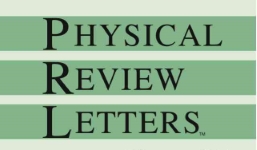- Details
- Category: Новости института
- Published: 19 November 2015
- Hits: 3300

Physical Review Letters (IF 7.512) accepted for publication the paper of R.Stepanov, P.Frick and A.Shestakov (ICMM, laboratory of Physical hydrodynamics) and E.Golbraikh (University of Ben-Gurion, Israel) «Hindered energy cascade in highly helical isotropic turbulence».
The conventional approach to the turbulent energy cascade, based on Richardson-Kolmogorov phenomenology, ignores the topology of emerging vortices, which is related to the helicity of the turbulent flow. It is generally believed that helicity
can play a significant role in turbulent systems, e.g., supporting the generation of large-scale magnetic fields, but its impact on the energy cascade to small scales has never been observed. We suggest for the first time a generalized phenomenology for isotropic turbulence with an arbitrary spectral distribution of the helicity. We discuss various scenarios of direct turbulent cascades with new helicity effect, which can be interpreted as a hindering of the spectral energy transfer. Therefore the energy is accumulated and redistributed so that the efficiency of non-linear interactions will be sufficient to provide a constant energy flux. We confirm our phenomenology by high Reynolds number numerical simulations based on a shell model of helical turbulence. The energy in our model is injected at a certain large scale only, whereas the source of helicity is distributed over all scales. In particular, we found that the helical bottleneck effect can appear in the inertial interval of the energy spectrum.
The paper will be published in December of 2015 in Physical Review Letters (PRL), the text is available on site arXiv.org.